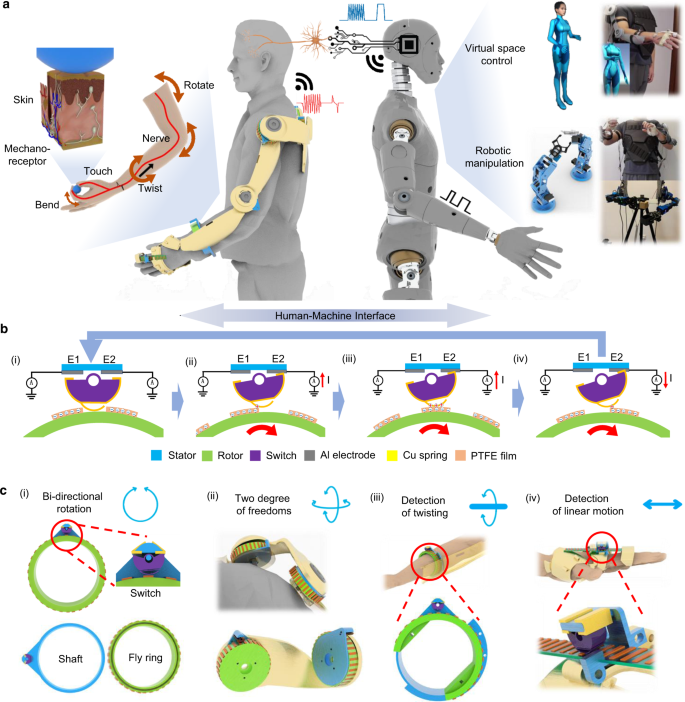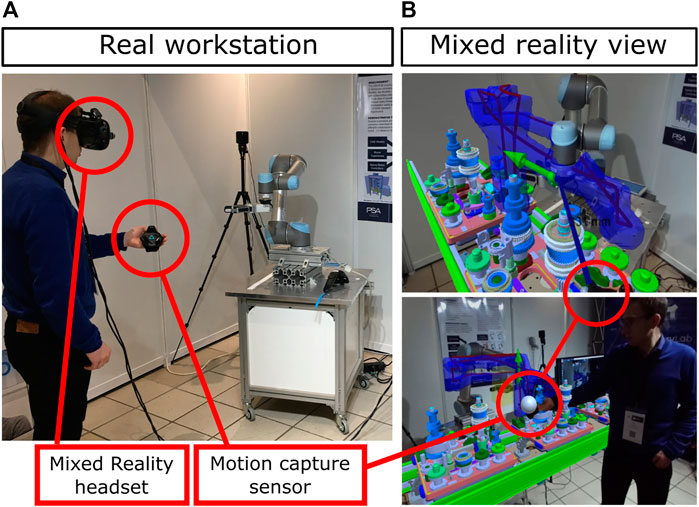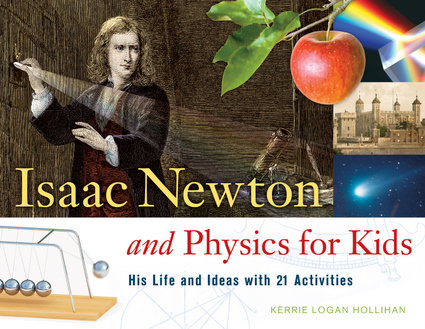Newton's Laws: The Universal Design Principles Governing Motion
From Sports Performance to Engineering Marvels
I've always been fascinated by how three simple laws, formulated over 300 years ago, continue to govern everything from the perfect arc of a basketball shot to the structural integrity of massive suspension bridges. Join me as we explore how Newton's principles shape our world in ways both obvious and surprising.
The Foundation: Understanding Newton's Three Laws as Design Principles
When I first began studying physics, I was struck by how Newton's three laws aren't just abstract mathematical concepts—they're fundamental design constraints that govern every system involving motion. These principles have shaped our understanding of the physical world for centuries and continue to guide modern engineering and scientific innovation.

First Law: Inertia
Objects at rest stay at rest, objects in motion stay in motion unless acted upon by an external force. This principle serves as the baseline for all motion analysis and explains why we need seatbelts in cars and why spacecraft can coast through space indefinitely.
Second Law: F=ma
Force equals mass times acceleration—the mathematical relationship that governs all dynamic systems. This equation allows engineers to calculate exactly how much force is needed to accelerate a rocket, stop a train, or design a building that can withstand wind loads.
Third Law: Action-Reaction
Every action has an equal and opposite reaction—the principle of equilibrium in design. This law explains how we walk (pushing against the ground), how rockets launch (pushing against exhaust gases), and how bridges distribute loads.
What makes these laws truly remarkable is how they transcend the boundaries of physics. They represent fundamental design constraints for any system involving motion, whether we're analyzing the biomechanics of a tennis serve or designing the structural supports for a skyscraper. To effectively communicate these abstract physics concepts, I've found that evolution of law visualization techniques can transform complex equations into intuitive motion diagrams that anyone can understand.
Interactive Newton's Laws Flowchart
This diagram shows how Newton's three laws interconnect to govern all motion:
flowchart TD
A[Object in Motion/Rest] --> B{External Force Applied?}
B -->|No| C[First Law: Maintains State]
B -->|Yes| D[Second Law: F = ma]
D --> E[Acceleration Occurs]
E --> F[Third Law: Reaction Force]
F --> G[System Equilibrium]
C --> H[Inertial Reference Frame]
G --> I[Motion Analysis Complete]
H --> I
style A fill:#ff8000,stroke:#333,stroke-width:2px,color:#fff
style C fill:#42a5f5,stroke:#333,stroke-width:2px,color:#fff
style D fill:#66bb6a,stroke:#333,stroke-width:2px,color:#fff
style F fill:#ffa726,stroke:#333,stroke-width:2px,color:#fff
Newton's Laws in Athletic Performance: The Science Behind Perfect Shots
As someone who has spent countless hours analyzing athletic performance, I'm continually amazed by how Newton's laws reveal the hidden physics behind every great athletic achievement. From the perfect arc of a basketball shot to the explosive power of a tennis serve, these fundamental principles govern the mechanics that separate good athletes from great ones.

Basketball Trajectory Analysis
The perfect basketball shot is a masterclass in projectile motion. When I analyze Stephen Curry's shooting mechanics through Newton's lens, I see how he intuitively optimizes launch angle (typically 45-50 degrees), minimizes horizontal velocity variations, and creates consistent arc patterns that maximize scoring probability.
- • Optimal release angle accounts for gravity's constant acceleration
- • Follow-through ensures consistent force application (F=ma)
- • Backspin creates Magnus effect for softer landings
Tennis Serve Mechanics
A powerful tennis serve demonstrates the kinetic chain principle—force transfer from ground through legs, torso, shoulder, and finally to the racket. The third law is evident as players push against the court to generate upward and forward momentum.
- • Ground reaction forces initiate the kinetic chain
- • Sequential acceleration maximizes racket head speed
- • Impact forces can exceed 300 pounds
Force Analysis in Different Sports
Comparing peak forces generated across various athletic activities:
What's particularly exciting is how modern technology allows us to visualize these forces in real-time. Using AI motion graphics capabilities, we can create dynamic sports performance visualizations that reveal the invisible forces at play. These tools help coaches optimize training programs and athletes perfect their technique by making the abstract principles of physics tangible and actionable.
Case Study: Stephen Curry's Shooting Mechanics
Through detailed motion analysis, we can see how Curry's shooting form optimizes Newton's laws: his consistent release point minimizes variables in the force equation, his follow-through ensures proper force direction, and his footwork creates a stable platform for force generation. This scientific approach to skill development is revolutionizing athletic training across all sports.
Engineering Marvels: How Newton's Laws Shape Infrastructure Design
Throughout my career studying engineering applications, I've been consistently impressed by how Newton's three laws serve as the foundational principles for some of humanity's greatest architectural and engineering achievements. Every bridge, skyscraper, and vehicle represents a practical application of these timeless physical laws.

Engineering Applications of Newton's Laws
How fundamental physics principles translate into structural design:
flowchart LR
subgraph "First Law Applications"
A[Static Equilibrium] --> B[Building Foundations]
A --> C[Bridge Supports]
end
subgraph "Second Law Applications"
D[Dynamic Loading] --> E[Earthquake Design]
D --> F[Wind Resistance]
D --> G[Vehicle Dynamics]
end
subgraph "Third Law Applications"
H[Action-Reaction] --> I[Thrust Systems]
H --> J[Load Distribution]
H --> K[Structural Joints]
end
B --> L[Safety Factors]
C --> L
E --> L
F --> L
G --> M[Performance Optimization]
I --> M
J --> L
K --> L
style A fill:#ff8000,stroke:#333,stroke-width:2px,color:#fff
style D fill:#42a5f5,stroke:#333,stroke-width:2px,color:#fff
style H fill:#66bb6a,stroke:#333,stroke-width:2px,color:#fff
Bridge Engineering Excellence
Suspension bridges like the Golden Gate Bridge are masterpieces of applied physics. The main cables carry tensile forces (pulling), while the towers handle compressive forces (pushing). Load distribution follows Newton's laws precisely—every vehicle crossing the bridge creates downward forces that are transmitted through the deck, distributed by cables, and ultimately transferred to the foundations.
Key Physics Principles:
- • Tensile strength calculations using F=ma
- • Wind load analysis for dynamic forces
- • Thermal expansion considerations
- • Seismic resistance through flexible design
Skyscraper Structural Systems
Modern skyscrapers must withstand enormous forces—gravity loads from their own weight, wind loads that can exceed hurricane forces, and seismic forces during earthquakes. Engineers use Newton's laws to calculate these forces and design structural systems that can safely handle them.
Engineering Solutions:
- • Tuned mass dampers for oscillation control
- • Steel frame design for flexibility
- • Foundation systems for load transfer
- • Aerodynamic shaping to reduce wind forces
Automotive Safety Innovation
Modern vehicle safety systems are sophisticated applications of Newton's laws. Crumple zones are designed to increase collision time, thereby reducing the forces experienced by passengers (F=ma, where extending time reduces acceleration and thus force). Airbags provide controlled deceleration, and anti-lock braking systems optimize friction forces to maintain vehicle control.

The integration of real engineering data and structural diagrams has been revolutionized by modern visualization tools. By leveraging deep learning in physics research capabilities, engineers can now create comprehensive models that predict structural behavior under various loading conditions, optimize designs for safety and efficiency, and communicate complex engineering concepts to stakeholders through clear, intuitive visualizations.
Earthquake-Resistant Design Philosophy
Modern seismic design doesn't try to create rigid structures that resist earthquake forces—instead, engineers design buildings that can flex and absorb seismic energy. This approach uses Newton's laws to predict how structures will respond to ground motion, allowing buildings to "dance" with earthquakes rather than fight them, dramatically improving survival rates in seismic events.
Everyday Applications: Newton's Laws in Daily Life
What fascinates me most about Newton's laws is how they govern countless aspects of our daily lives, often in ways we never consciously consider. From the moment we take our first step in the morning to the complex engineering of household appliances, these fundamental principles are constantly at work around us.

Human Locomotion
Walking and running are elegant demonstrations of Newton's third law in action. With each step, we push against the ground, and the ground pushes back with equal force, propelling us forward. Our bodies naturally optimize this process, adjusting stride length and frequency to maximize efficiency while minimizing energy expenditure.
- • Ground reaction forces propel movement
- • Balance requires constant micro-adjustments
- • Running efficiency peaks at optimal cadence
Vehicle Dynamics
Every aspect of driving involves Newton's laws. Braking distances depend on mass and friction (F=ma), cornering forces determine safe turning speeds, and acceleration is limited by engine power and vehicle weight. Understanding these relationships helps explain why larger vehicles require longer stopping distances and why sports cars can accelerate so quickly.
- • Braking force = mass × deceleration
- • Cornering limited by tire friction
- • Fuel efficiency affected by aerodynamics
Forces in Everyday Activities
Typical forces we encounter in daily life (measured in Newtons):
Playground Safety
Playground equipment design heavily relies on Newton's laws to ensure child safety. Slide angles are calculated to balance fun with safe speeds, swing chains must handle dynamic loads, and impact-absorbing surfaces use energy transfer principles to reduce injury risk from falls.
Musical Instruments
String instruments demonstrate beautiful physics—tension in guitar strings determines pitch, while the resonance frequency of the body amplifies sound. Piano hammers transfer momentum to strings, and wind instruments use air pressure and flow dynamics to create music.
Home Appliances
Washing machines use centrifugal force to extract water, refrigerator compressors apply thermodynamics principles, and vacuum cleaners create pressure differentials. Each appliance represents sophisticated engineering that makes Newton's laws work for our convenience.
The beauty of these everyday applications lies in their universality. Whether we're analyzing the biomechanics of walking or the engineering of a smartphone's vibration motor, the same fundamental principles apply. This consistency makes Newton's laws not just scientific concepts, but practical tools for understanding and improving the world around us.
Visualizing Complex Motion: From Theory to Practice
One of the greatest challenges I've encountered in physics education is the gap between static textbook diagrams and the dynamic reality of motion. Traditional physics education often relies on simplified illustrations that fail to capture the complexity and beauty of real-world motion, leaving students struggling to connect abstract equations with tangible experiences.

The Visualization Revolution
Modern visualization tools have transformed how we can communicate physics concepts. Interactive motion simulations bring Newton's laws to life through animation, allowing learners to manipulate variables and immediately see the consequences. Real-time force vector visualization makes invisible forces visible, while comparative analysis tools enable side-by-side motion studies across different applications.
Using advanced prompt engineering techniques, we can now transform complex physics equations into engaging visual narratives that make abstract concepts tangible and memorable. This approach helps bridge the gap between theoretical understanding and practical application.
Modern Physics Visualization Techniques
Evolution from static to dynamic educational tools:
flowchart TD
A[Traditional Static Diagrams] --> B[Limited Understanding]
C[Interactive Simulations] --> D[Enhanced Comprehension]
E[Real-time Visualization] --> F[Immediate Feedback]
G[Comparative Analysis] --> H[Pattern Recognition]
I[Modern Visualization Tools] --> C
I --> E
I --> G
D --> J[Improved Learning Outcomes]
F --> J
H --> J
J --> K[Better Physics Education]
style A fill:#ffcdd2,stroke:#d32f2f,stroke-width:2px
style I fill:#ff8000,stroke:#333,stroke-width:2px,color:#fff
style K fill:#c8e6c9,stroke:#388e3c,stroke-width:2px
Interactive Motion Simulations
Modern physics simulations allow users to adjust parameters like mass, force, and friction in real-time, immediately seeing how these changes affect motion. Students can experiment with different scenarios—from projectile motion to orbital mechanics—gaining intuitive understanding through hands-on exploration.
Key Features:
- • Real-time parameter adjustment
- • Multiple scenario comparison
- • Data export for analysis
- • Cross-platform accessibility
Modular Design Approach
Building modular physics demonstrations with drag-and-drop components allows educators to create custom visualizations tailored to specific learning objectives. This approach makes complex physics concepts accessible to learners at all levels, from elementary students to advanced researchers.
Benefits:
- • Customizable difficulty levels
- • Reusable components
- • Collaborative development
- • Rapid prototyping capability
Learning Effectiveness: Traditional vs. Interactive Methods
Comparative study results showing comprehension improvement:
The transformation of physics education through visualization represents more than just technological advancement—it's a fundamental shift toward making scientific concepts more accessible and engaging. By leveraging tools that can transform complex physics equations into engaging visual narratives, educators can create learning experiences that inspire curiosity and deep understanding rather than rote memorization.
The Future of Physics Education
As we continue to develop more sophisticated visualization tools, the gap between abstract physics concepts and practical understanding will continue to narrow. Students will be able to explore virtual laboratories, manipulate forces in three-dimensional space, and see the immediate consequences of changing physical parameters—making Newton's laws not just equations to memorize, but principles to experience and understand intuitively.
Future Applications: Newton's Laws in Emerging Technologies
As I look toward the future of technology, I'm struck by how Newton's 300-year-old laws continue to be fundamental to the most cutting-edge innovations. From robotics and virtual reality to space exploration and sustainable transportation, these timeless principles remain as relevant today as they were when first formulated.

Newton's Laws in Emerging Technologies
How classical physics enables modern innovations:
flowchart TB
subgraph "Robotics & AI"
A[Natural Movement] --> B[Humanoid Robots]
A --> C[Prosthetic Limbs]
end
subgraph "Virtual Reality"
D[Physics Engines] --> E[Realistic Simulation]
D --> F[Haptic Feedback]
end
subgraph "Transportation"
G[Energy Efficiency] --> H[Electric Vehicles]
G --> I[Autonomous Systems]
end
subgraph "Space Technology"
J[Propulsion Systems] --> K[Mars Missions]
J --> L[Satellite Networks]
end
M[Newton's Laws] --> A
M --> D
M --> G
M --> J
style M fill:#ff8000,stroke:#333,stroke-width:2px,color:#fff
style B fill:#42a5f5,stroke:#333,stroke-width:2px,color:#fff
style E fill:#66bb6a,stroke:#333,stroke-width:2px,color:#fff
style H fill:#ffa726,stroke:#333,stroke-width:2px,color:#fff
style K fill:#ab47bc,stroke:#333,stroke-width:2px,color:#fff
Robotics and Automation
Modern robotics relies heavily on Newton's laws to program natural movement patterns. Boston Dynamics' robots demonstrate this beautifully—their ability to walk, run, and maintain balance comes from sophisticated algorithms that apply Newton's principles in real-time. Each step involves calculating ground reaction forces, maintaining center of mass, and responding to external disturbances.
Key Applications:
- • Dynamic balance control systems
- • Force-feedback manipulation
- • Collision avoidance algorithms
- • Energy-efficient locomotion
Virtual Reality Physics Engines
Creating realistic motion simulation in VR requires precise implementation of Newton's laws. Every virtual object must behave according to real physics—balls bounce with appropriate energy conservation, virtual vehicles handle with realistic dynamics, and users can intuitively interact with objects because they follow familiar physical rules.
Technical Challenges:
- • Real-time physics calculations
- • Collision detection optimization
- • Haptic feedback synchronization
- • Multi-body dynamics simulation
Biomechanical Prosthetics Innovation
Advanced prosthetic limbs represent some of the most sophisticated applications of Newton's laws in modern medicine. These devices must replicate the complex force patterns of natural limbs, providing users with intuitive control and natural movement. Engineers analyze the biomechanics of walking, running, and grasping to create artificial systems that seamlessly integrate with the human body.

Modern prosthetics incorporate force sensors, gyroscopes, and accelerometers to detect user intent and environmental conditions, then apply Newton's laws to generate appropriate responses. This technology is revolutionizing rehabilitation and quality of life for amputees worldwide.
Technology Development Timeline
Newton's laws enabling technological advancement over time:
Sustainable Transportation
Electric vehicles and autonomous systems optimize energy efficiency through precise application of Newton's laws. Regenerative braking systems convert kinetic energy back to electrical energy, while autonomous vehicles calculate optimal acceleration and deceleration patterns to minimize energy consumption and maximize safety.
Future developments include hyperloop systems that use magnetic levitation to eliminate friction, and electric aircraft that must carefully balance weight, lift, and propulsion forces.
Space Exploration
Advanced propulsion systems for Mars missions and satellite networks rely on Newton's third law for thrust generation. Ion drives, solar sails, and nuclear propulsion systems all operate on these fundamental principles, enabling humanity's expansion into the solar system.
Upcoming missions to Mars will use atmospheric braking, precision landing systems, and in-situ resource utilization—all based on careful application of classical mechanics.
What's particularly exciting is how we can now integrate cutting-edge research data and visualize these complex systems using advanced computational tools. The ability to model and simulate these technologies before building them has accelerated innovation dramatically, allowing engineers to test thousands of scenarios virtually before committing to physical prototypes.
The Convergence of Classical and Quantum Physics
While quantum mechanics governs the microscopic world, Newton's laws remain supreme for macroscopic systems. Future technologies will likely combine both realms—quantum computers calculating optimal trajectories for classical spacecraft, or quantum sensors providing ultra-precise measurements for robotic systems that still move according to Newton's principles. This convergence represents the next frontier in applied physics.
Practical Implementation: Tools and Techniques for Motion Analysis
Throughout my experience with motion analysis, I've discovered that the most effective approach combines theoretical understanding with practical tools and hands-on experimentation. Whether you're an educator looking to engage students, an engineer solving real-world problems, or simply someone curious about the physics around you, the right tools can make Newton's laws come alive.

Software Solutions
Modern motion capture and analysis software has democratized physics research. Tools like Tracker, LoggerPro, and specialized engineering simulation packages allow users to analyze real-world motion with professional-grade accuracy.
- • Video analysis capabilities
- • Real-time data collection
- • 3D motion tracking
- • Statistical analysis tools
Educational Approaches
Teaching Newton's laws through hands-on experimentation creates deeper understanding than traditional lecture methods. Interactive demonstrations, student-designed experiments, and peer collaboration enhance learning outcomes significantly.
- • Inquiry-based learning
- • Collaborative problem-solving
- • Real-world applications
- • Technology integration
Professional Applications
Engineering simulation and testing protocols rely on sophisticated implementations of Newton's laws. Finite element analysis, computational fluid dynamics, and multi-body dynamics simulation enable engineers to solve complex problems before physical testing.
- • CAD integration
- • Performance optimization
- • Safety validation
- • Cost reduction analysis
Motion Analysis Implementation Process
Step-by-step approach to effective motion analysis:
flowchart TD
A[Define Objectives] --> B[Select Tools]
B --> C[Data Collection]
C --> D[Analysis & Modeling]
D --> E[Validation]
E --> F[Implementation]
F --> G[Continuous Improvement]
H[Theoretical Framework] --> A
I[Available Resources] --> B
J[Quality Control] --> C
K[Newton's Laws] --> D
L[Real-world Testing] --> E
M[Performance Metrics] --> F
N[Feedback Loop] --> G
G --> A
style A fill:#ff8000,stroke:#333,stroke-width:2px,color:#fff
style D fill:#42a5f5,stroke:#333,stroke-width:2px,color:#fff
style F fill:#66bb6a,stroke:#333,stroke-width:2px,color:#fff
DIY Experiments: Simple Demonstrations of Complex Principles
Some of the most profound insights into Newton's laws come from simple experiments you can perform at home. These demonstrations reveal the elegant simplicity underlying complex motion phenomena and provide intuitive understanding that complements mathematical analysis.
Pendulum Studies
A simple pendulum demonstrates conservation of energy, periodic motion, and the relationship between gravitational force and acceleration. By varying string length and mass, you can explore how these variables affect motion patterns.
Collision Analysis
Rolling balls or marbles of different masses demonstrate momentum conservation and energy transfer. These experiments reveal how Newton's laws govern everything from billiard games to car crashes.
Projectile Motion
Launching objects at different angles shows how gravity affects trajectory. Water balloons, tennis balls, or even paper airplanes can demonstrate the physics principles behind everything from sports to space missions.
Friction Studies
Sliding objects across different surfaces reveals how friction affects motion. These experiments connect directly to real-world applications like tire design, brake systems, and athletic performance.
Educational Tool Effectiveness Comparison
Student comprehension rates using different teaching methods:
The most effective approach I've found combines multiple methods—starting with hands-on experiments to build intuition, followed by mathematical analysis to quantify observations, and concluding with real-world applications to demonstrate relevance. This comprehensive approach helps learners develop both conceptual understanding and practical skills.
Creating comprehensive motion analysis presentations has been revolutionized by modern workflow systems that can integrate data from multiple sources, generate visualizations automatically, and present findings in compelling formats. This technological advancement makes it easier than ever to communicate complex physics concepts to diverse audiences, from elementary students to professional engineers.
Building a Physics Learning Community
The most rewarding aspect of motion analysis is sharing discoveries with others. Whether through classroom demonstrations, online simulations, or collaborative research projects, the process of exploring Newton's laws together creates deeper understanding and lasting appreciation for the elegant principles that govern our physical world. When we can visualize these concepts clearly and share them effectively, we inspire the next generation of scientists, engineers, and curious minds.
Transform Your Visual Expressions with PageOn.ai
Ready to bring Newton's laws to life through stunning visualizations? PageOn.ai's powerful AI-driven tools can help you create compelling motion diagrams, interactive simulations, and engaging educational content that makes complex physics concepts accessible to any audience.
Start Creating with PageOn.ai TodayThe Timeless Relevance of Universal Principles
As I reflect on this exploration of Newton's laws, I'm continually amazed by how these three simple principles continue to shape our understanding of the world around us. From the perfect arc of a basketball shot to the structural integrity of modern skyscrapers, from the biomechanics of human movement to the cutting-edge robotics of tomorrow, Newton's laws remain the fundamental foundation upon which we build our technological civilization.

What makes this journey particularly exciting is how modern visualization tools and AI-powered analysis are making these concepts more accessible than ever before. We can now transform abstract equations into intuitive visual experiences, creating educational content that inspires understanding rather than memorization. The ability to see forces in action, manipulate variables in real-time, and explore complex systems through interactive simulations has revolutionized how we teach and learn physics.
The applications we've explored—from athletic performance optimization to earthquake-resistant building design, from advanced prosthetics to space exploration—demonstrate that Newton's laws are not just historical curiosities, but living, breathing principles that continue to drive innovation and discovery. As we face challenges like climate change, space colonization, and the development of artificial intelligence, these fundamental laws will undoubtedly play crucial roles in shaping our solutions.
Looking ahead, I'm excited about the convergence of classical mechanics with emerging technologies. The integration of visual understanding medical law principles with physics education, the application of machine learning to motion analysis, and the development of increasingly sophisticated simulation tools all point toward a future where the beauty and power of Newton's laws become even more apparent and accessible.
Whether you're a student just beginning to explore physics, an educator seeking to inspire the next generation, or a professional applying these principles in your work, remember that Newton's laws offer more than just mathematical relationships—they provide a lens through which we can understand the elegant simplicity underlying the complex world around us. By mastering these principles and learning to visualize them effectively, we gain not just knowledge, but the ability to see the hidden physics that governs everything from the smallest mechanical device to the grandest cosmic phenomena.
You Might Also Like
Building Trust in AI-Generated Marketing Content: Transparency, Security & Credibility Strategies
Discover proven strategies for establishing authentic trust in AI-generated marketing content through transparency, behavioral intelligence, and secure data practices.
Google's 9-Hour Prompt Engineering Path to AI Mastery | Complete Visual Guide
Master AI communication through Google's comprehensive 9-hour prompt engineering framework. Learn visual strategies for effective AI interaction and professional success.
Prompt Chaining Techniques That Scale Your Business Intelligence | Advanced AI Strategies
Master prompt chaining techniques to transform complex business intelligence workflows into scalable, automated insights. Learn strategic AI methodologies for data analysis.
Transform Your AI Results by Mastering the Art of Thinking in Prompts | Strategic AI Communication
Master the strategic mindset that transforms AI interactions from fuzzy requests to crystal-clear outputs. Learn professional prompt engineering techniques that save 20+ hours weekly.
